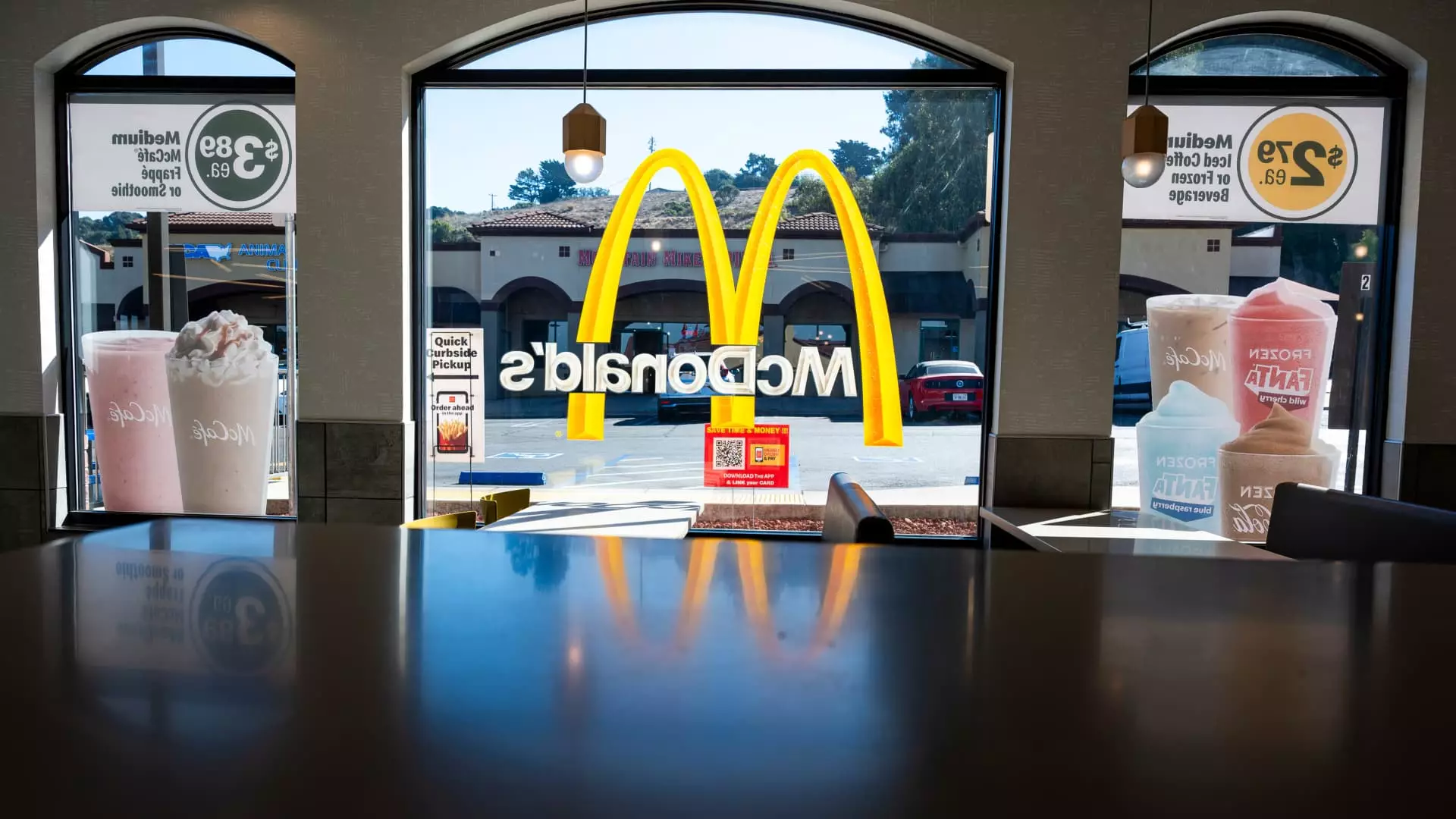As we step into 2025, the restaurant industry finds itself grappling with a unique set of challenges and opportunities. The phrase “In like a lion, out like a lamb” resonates deeply as restaurant executives forecast a year characterized by fluctuating consumer behavior shaped by economic uncertainties, unusual weather events, and competitive market dynamics. A closer examination reveals that while some chains are beginning to rebound, the overall sentiment remains cautious.
The year commenced with adverse conditions, including freezing temperatures and wildfires that disrupted typical dining patterns. Chains like Burger King and Popeyes, part of the Restaurant Brands International umbrella, reported a rebound in sales driven by value-oriented offerings aimed at enticing customers back from home-cooked meals. However, even industry giants like McDonald’s experienced a dip in same-store sales despite a surge in net traffic. Disturbances in the broader economic landscape, combined with consumer hesitation, created an environment fraught with uncertainty.
January offered a glimpse of the duality of current trends; fast–food sales increased by 3.4%, yet this marked a slight decline from December’s uptick. The consistent decline in traffic during traditional meal times such as breakfast and lunch raises critical questions about consumer confidence and spending habits. As Subway’s U.S. President suggested, consumers are approaching their dining choices with caution, seeking value without compromising on quality or portion sizes.
While weather patterns and seasonal changes negatively impacted sales in January, underlying economic conditions also played a significant role. Political climates, particularly around trade relationships, have left consumers wary, affecting their spending behaviors. This concern is reflected in the drop in consumer sentiment to a seven-month low, signaling anxiety regarding inflation and rising costs. The Department of Labor’s report of a 3.4% increase in food prices over the past year only exacerbated these fears, putting additional pressure on restaurant chains as they navigate operational costs.
Impact on Major Chains and Future Projections
As we look further into the year, analysts predict that the restaurant industry’s capacity to recover will hinge heavily on economic improvement and easing comparisons to the previous year’s downturns. For instance, Chipotle Mexican Grill has indicated a challenging road ahead with flat same-store sales projected for the first quarter. The company’s recent experiences with wildfires in Los Angeles underscored the volatile nature of external factors impacting consumer traffic.
Expectations for second-quarter growth demonstrate a underlying optimism; many chains are strategically positioning themselves for the summer months when demand typically surges. Nevertheless, businesses like Chipotle remain cautious, forecasting weaker sales compared to last year’s promotional heights.
Interestingly, despite the worries surrounding tariffs and their implications for food costs—particularly for companies dependent on imports like Chipotle—many national chains have refrained from making drastic operational changes in anticipation of new trade policies. This response highlights a broader industry sentiment that prioritizes stability over knee-jerk reactions to shifting regulatory environments.
Long-Term Considerations and Brand Resilience
McDonald’s continues to ride out the aftermath of previous crises such as the E. coli outbreak linked to its Quarter Pounder burgers that dampened sales last autumn. The fast-food titan remains confident that consumer demand will normalize by mid-Q2, a testament to the brand’s resilience and robust marketing strategies.
Contrastingly, Starbucks faces a more prolonged turnaround as the coffee chain experiences declining same-store sales for the past four quarters. Having chosen to suspend its financial outlook for fiscal 2025, Starbucks exemplifies how significant structural changes within a company can create short-term instability even while positioning for long-term gains. The strategic shift in their investments highlights the need for companies to adapt and innovate in response to market fluctuations.
As the restaurant industry steps into 2025, one thing remains clear: navigating this landscape requires agility, a keen market insight, and a long-term vision. With numerous factors influencing consumer behavior—from economic pressures to weather patterns—executives must remain vigilant and responsive to the shifting tides. While initial challenges loom large, there exists a collective anticipation that as the year progresses, the industry will rebound and emerge more robust than ever. The resilience and adaptability of these brands will ultimately determine their success in this evolving environment.

